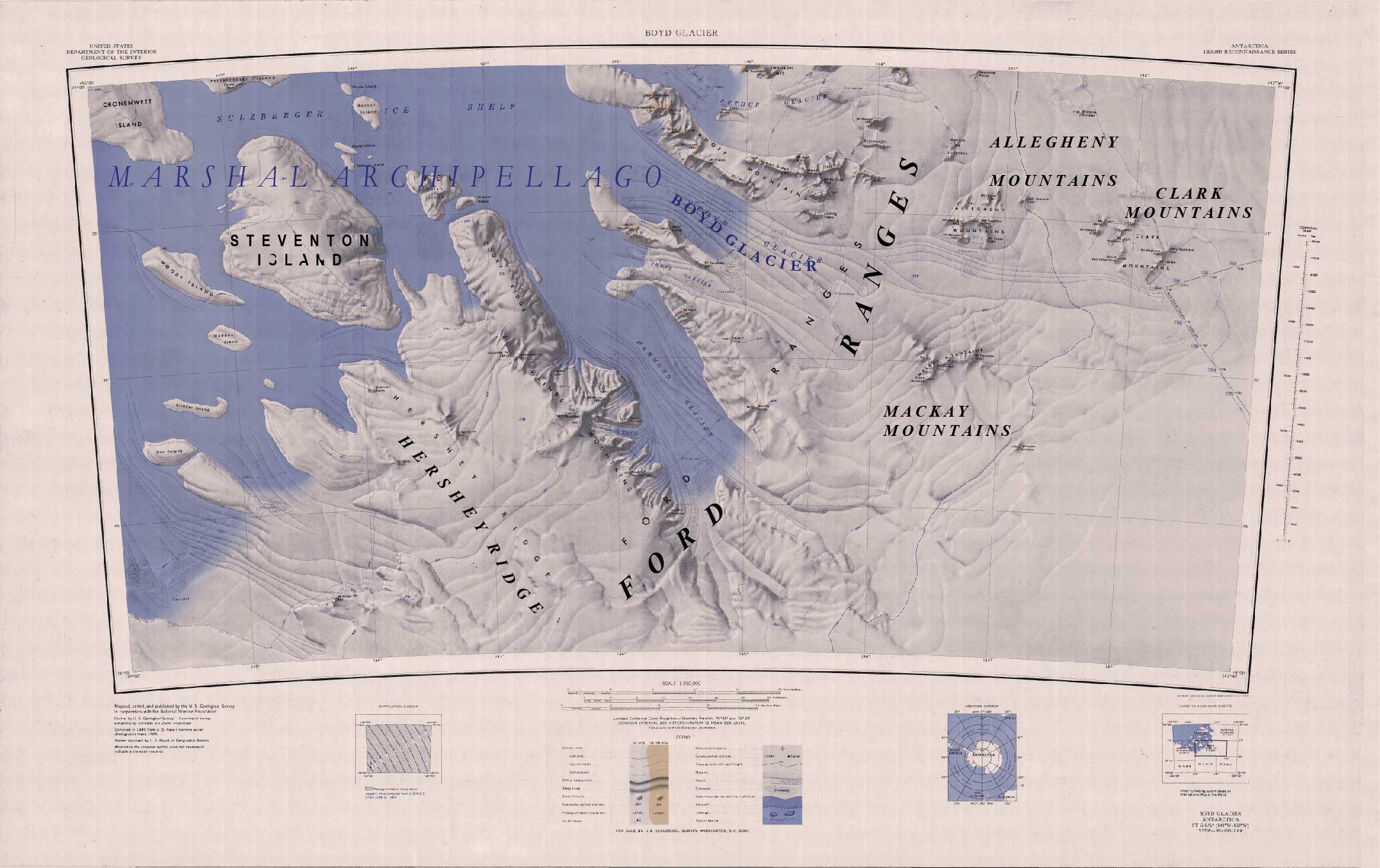Difference between revisions of "Hershey Ridge"
Jump to navigation
Jump to search
(Created with content derived from Wikipedia) |
m |
||
| (One intermediate revision by one other user not shown) | |||
| Line 1: | Line 1: | ||
[[File:FORD RANGES.jpg|thumb|upright=2.0]] | [[File:FORD RANGES.jpg|thumb|upright=2.0]] | ||
'''Hershey Ridge''' (77°40′S 147°10′W) is a low, ice-covered ridge trending in a northwest–southeast direction for about 30 nautical miles (56 km) between McKinley Peak and the Haines Mountains | '''Hershey Ridge''' (77°40′S 147°10′W) is a low, [[ice]]-covered ridge trending in a northwest–southeast direction for about 30 nautical miles (56 km) between [[McKinley Peak]] and the [[Haines Mountains]] in the [[Ford Ranges]] of [[Westarctica]]. | ||
[[ | ==Discovery and name== | ||
It was discovered in 1934 by the [[Byrd Antarctic Expedition]], and named for Garland Hershey, Assistant State Geologist of the Iowa Geological Survey (1939–47) and Director of the Iowa Geological Survey after 1947. | |||
[[Category:Geography of Westarctica]] | |||
Latest revision as of 04:39, 17 April 2020
Hershey Ridge (77°40′S 147°10′W) is a low, ice-covered ridge trending in a northwest–southeast direction for about 30 nautical miles (56 km) between McKinley Peak and the Haines Mountains in the Ford Ranges of Westarctica.
Discovery and name
It was discovered in 1934 by the Byrd Antarctic Expedition, and named for Garland Hershey, Assistant State Geologist of the Iowa Geological Survey (1939–47) and Director of the Iowa Geological Survey after 1947.
